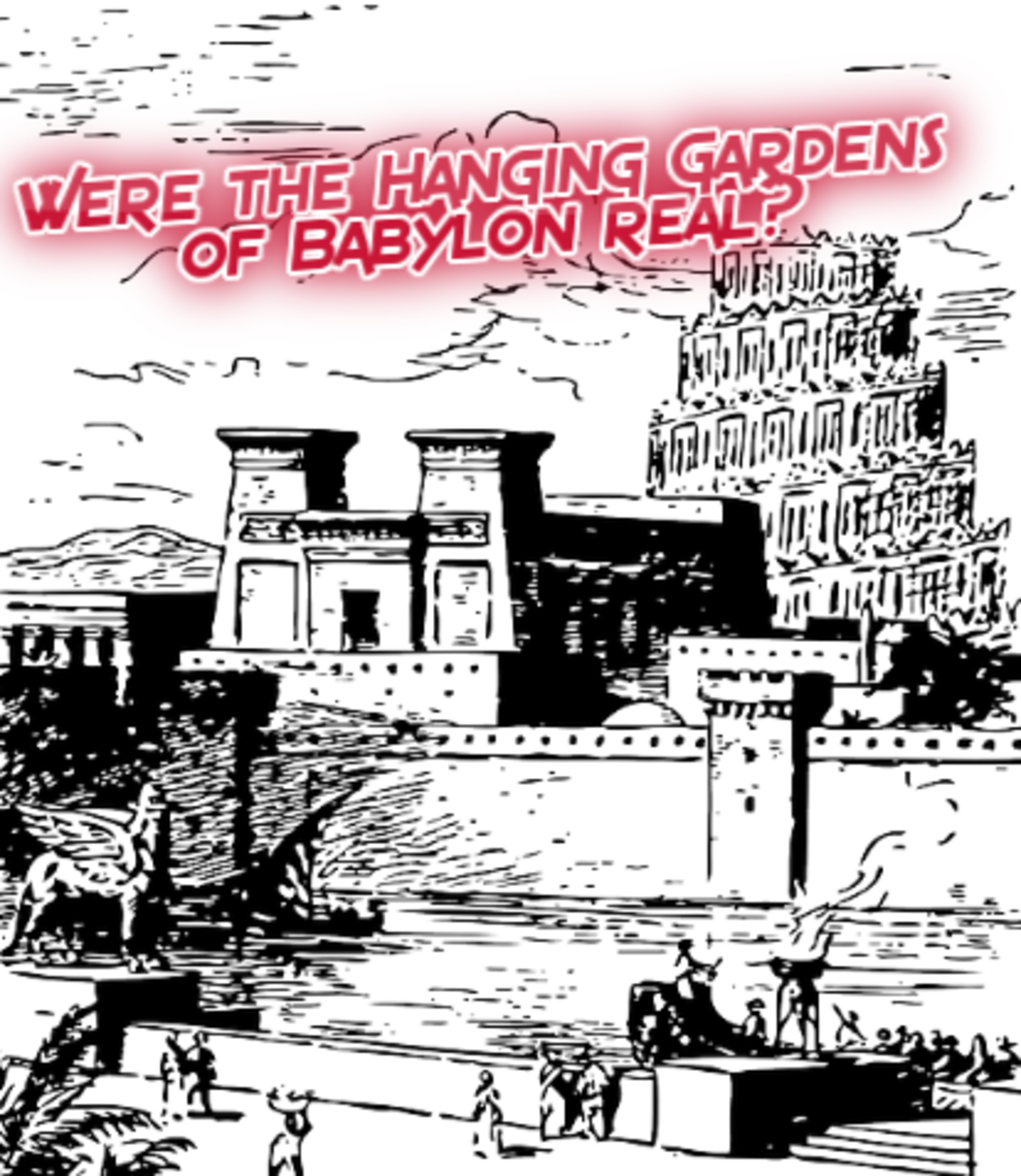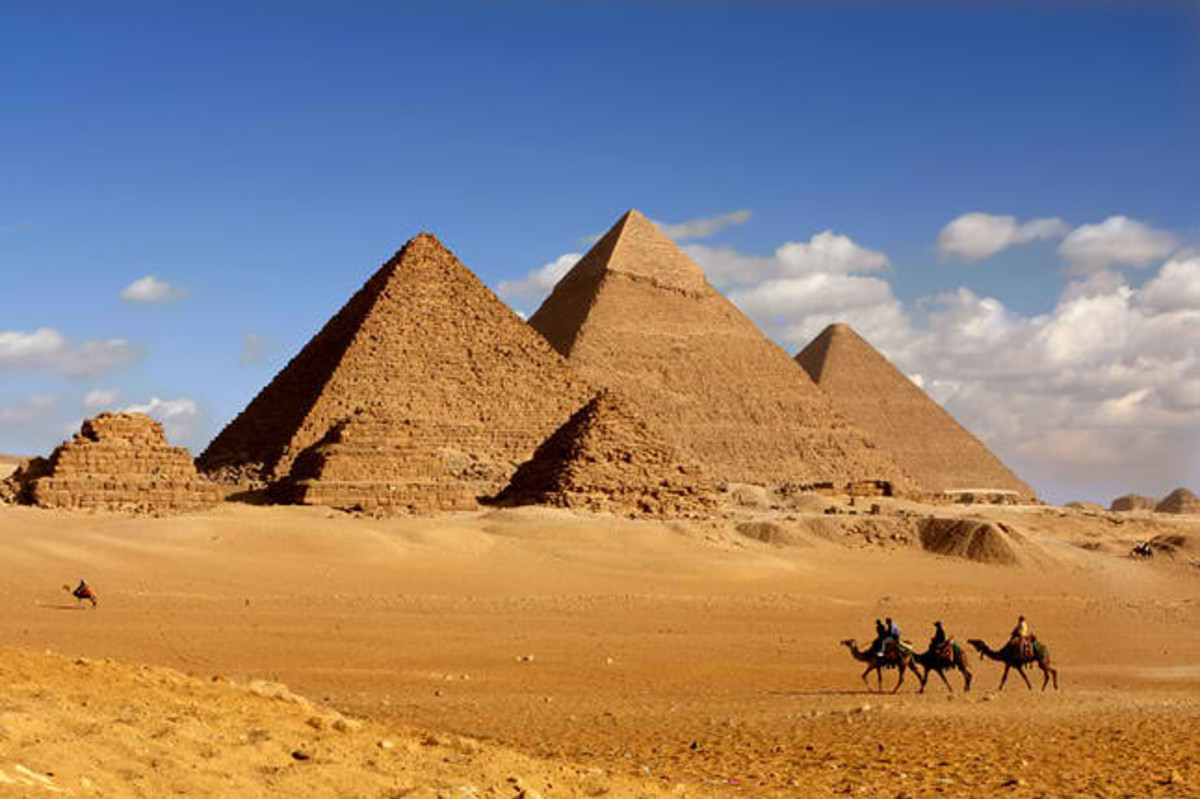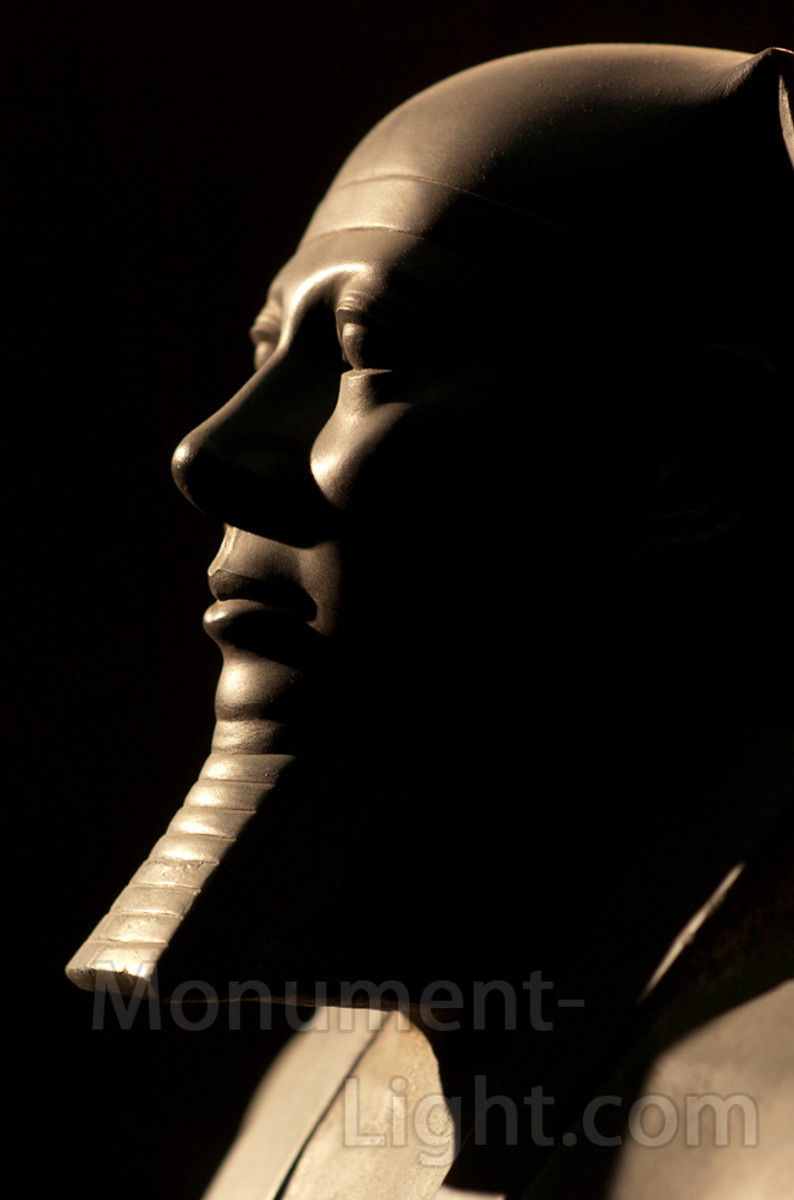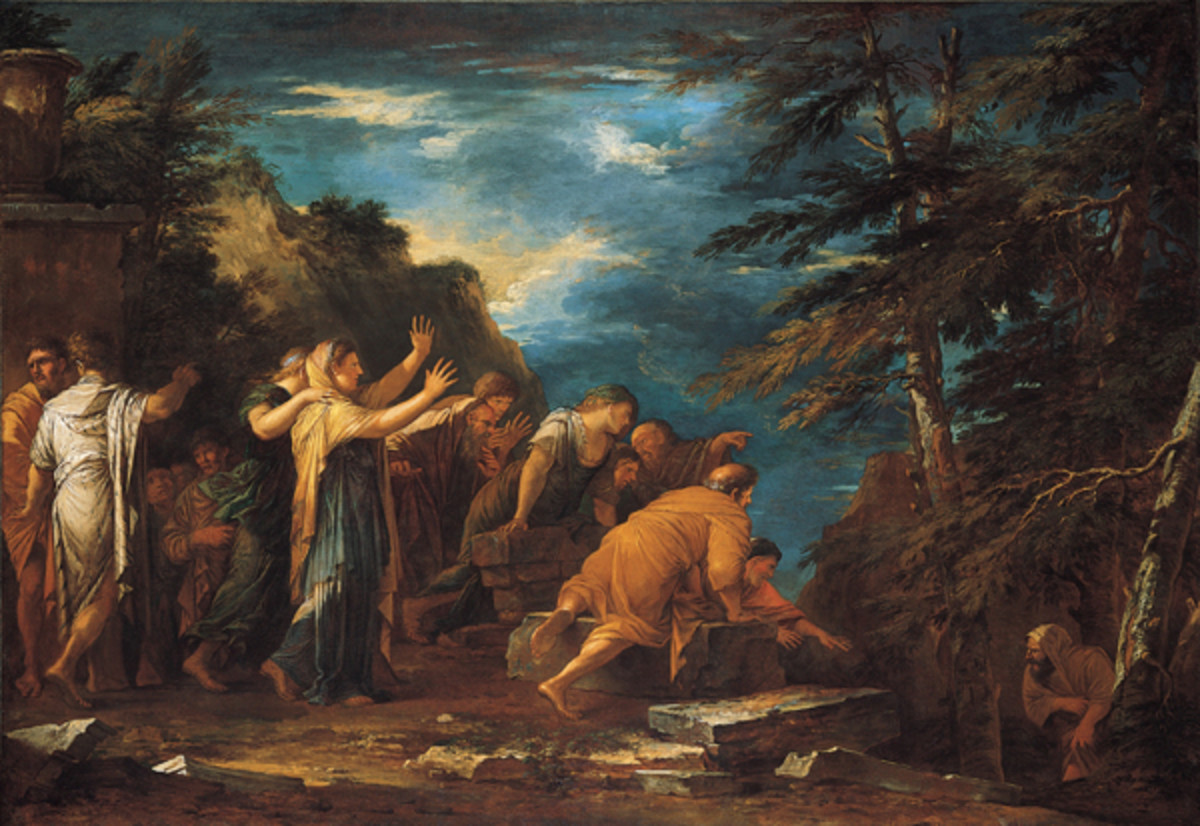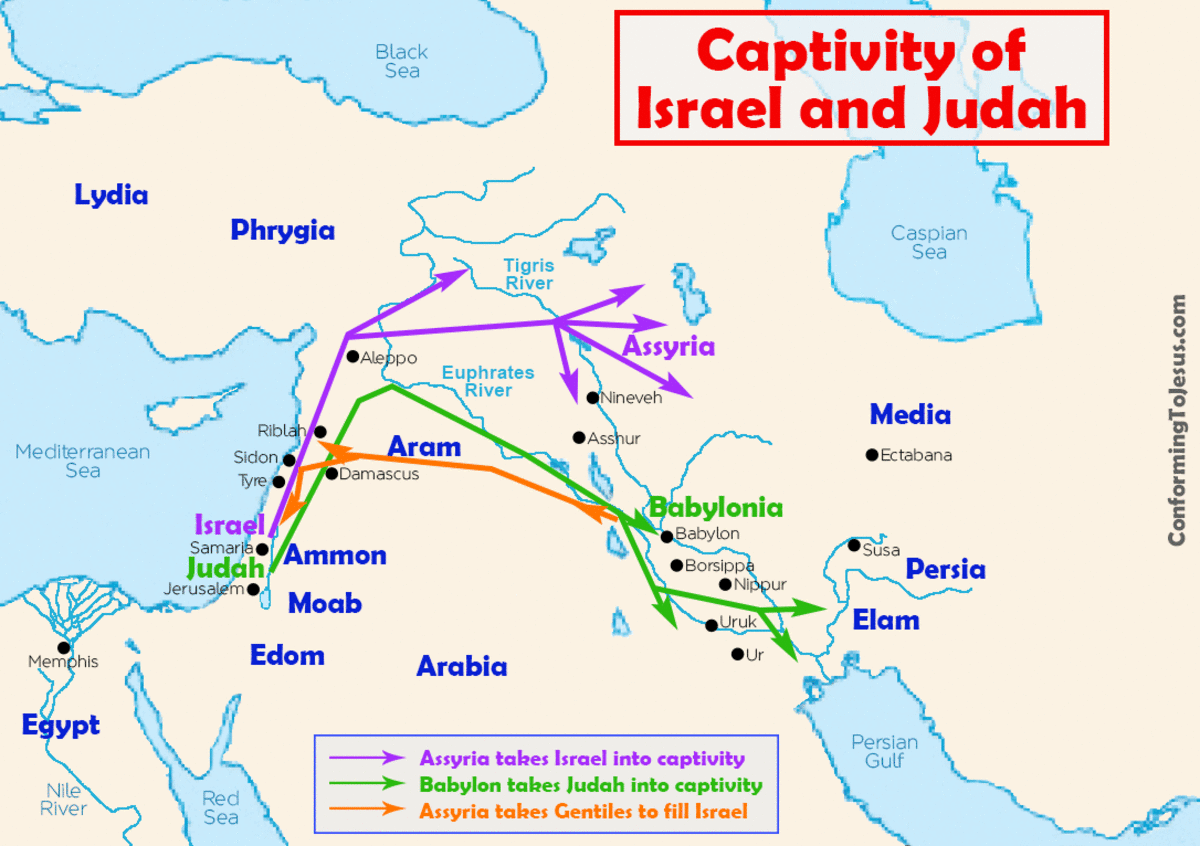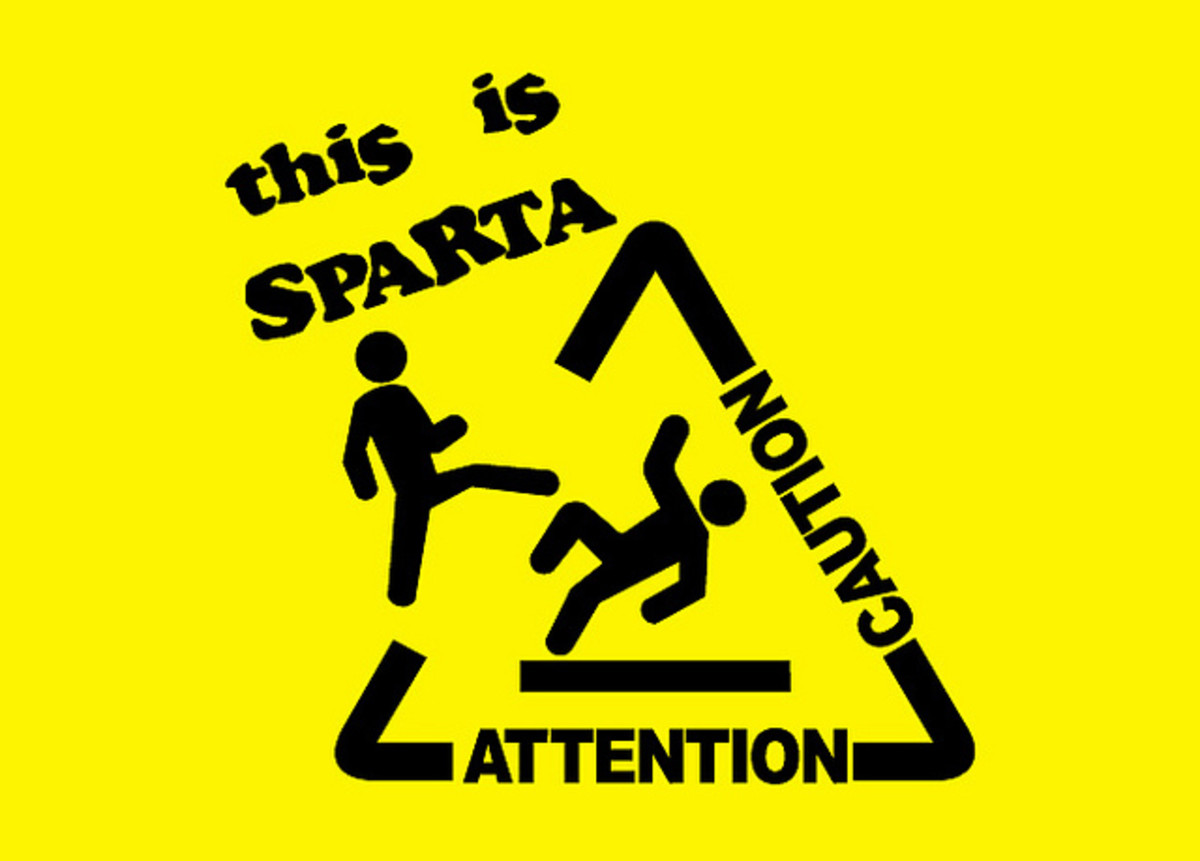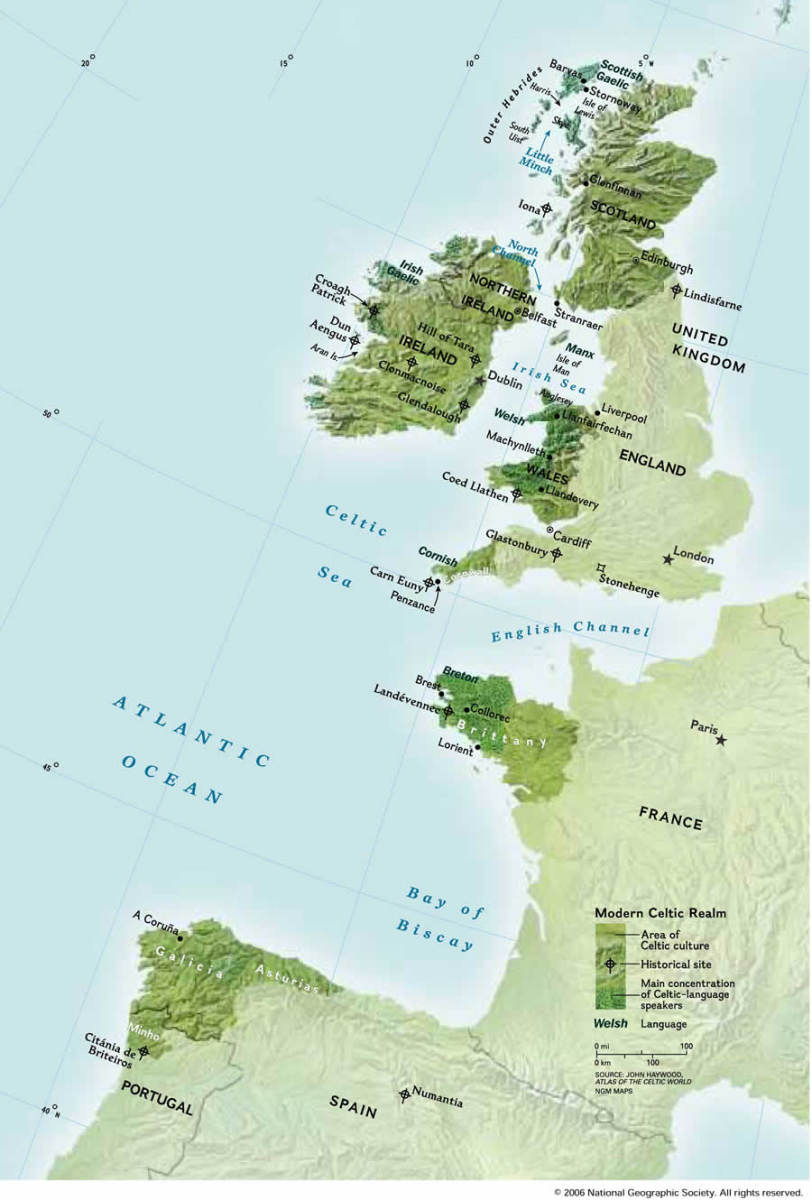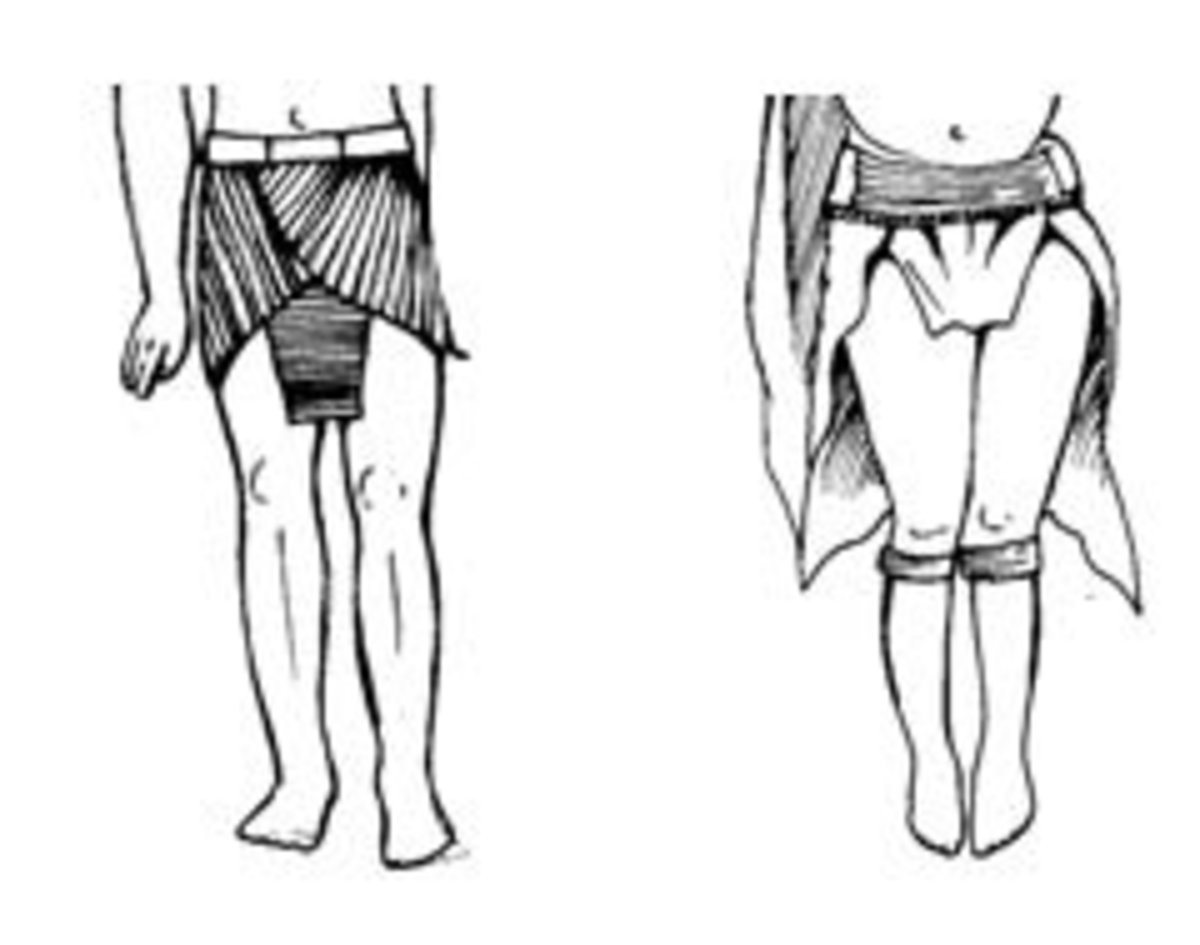The Seven Ancient Wonders
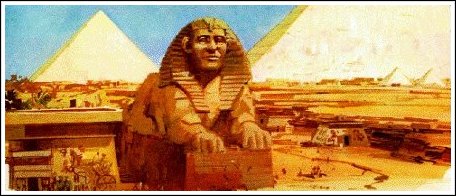
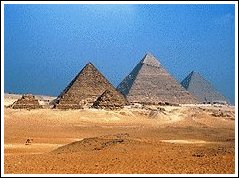
Throughout history, many “Seven wonders of the World” lists have come and gone. These lists tend to change with the times and none of them have been definitive. The original list of the “Seven Wonders of the Ancient World” was compiled by Greek historians. Therefore only the most magnificent structures known to them were included. Out of all the Ancient Wonders, only the pyramids at Giza, outside modern Cairo survive.
The largest, built by Cheops, a king of the fourth dynasty, had an original estimated height of 482 ft. It is now approximately 450 feet with a base approximately 755 ft long. It contains 2,300,000 blocks; each about 2.5 tons and is thought to have been completed around 2680 B.C. But what were considered the rest of the “wonders?”
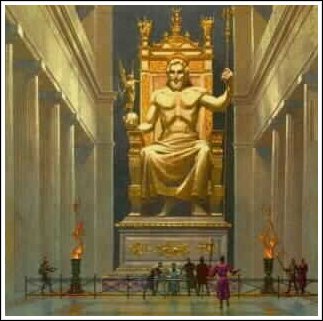
The Statue of Zeus (Jupiter) at Olympia was made of gold and ivory by the Greek sculptor Phidias in the 5th century B.C. It was said to be 40 ft high, and disappeared without a trace except for reproductions on coins. Ancient Greeks worshiped Zeus as king of the gods and held regular festivals at Olympia which included athletic competitions.
The statue is said to have had Zeus seated on a throne inlaid with ebony and precious stones. According to written descriptions viewing platforms were built along the walls so that people could climb up and see the gods' face.
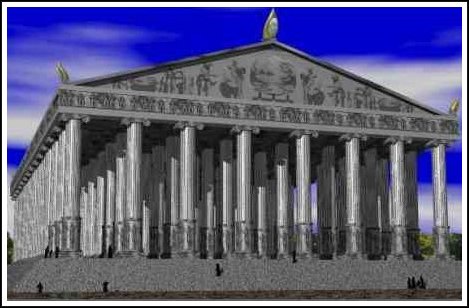
The Temple of Artemis (Diana) at Ephesus was begun about 350 B.C., in honor of a non-Hellenic goddess who later became identified with the Greek goddess of the same name. The temple, with columns 60 ft high, was destroyed by invading Goths in 262 A.D. The structure was so large it took 120 years to complete. It was one of the largest temples built in the ancient times with a foundation measuring 377 by 40 feet. It stood in the Greek city of Aphasias in what is now Turkey.
Except for its tile covered wooden roof the temple was entirely marble. Relatively speaking the temple had a short life span. In 550 B.C. King Cruesus of Lydia conquered Ephesus and the temple was destroyed. However, another one was built to replace it. Then a man named Croesus Ephesian burned it to ashes. The temple held many works of art such as four bronze statues of Amazon women. The length of this temple was 425 feet by 225 feet and had 127 columns, 60 feet high. Today the site is a marshy field with a single column to signify one of the seven wonders of the ancient world once stood there.
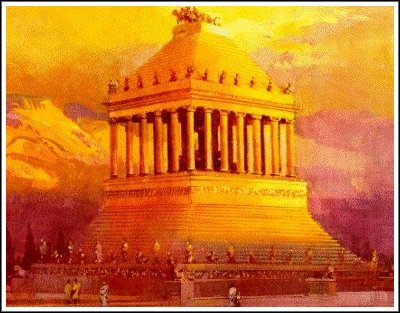
The Mausoleum at Halicarnassus was erected by Queen Artemisia in memory of her husband, King Mausolus of Caria in Asia Minor, who died in 353 B.C. At the height of his powers, Mausolus and his queen, Artemisia, controlled most of southwest Asia Minor. When Mausolus died Artemisia built a tomb larger and unlike any seen theretofore. Stone lions guarded the stairway to the tomb.
The structure was 140 feet high and the bottom third was solid marble. The middle third contained Greek columns with the top comprising a pyramid. On top of the pyramid was a large stone sculpture showing Mausolus and Artemisia standing side by side in a chariot. Artemisia died two years later while the tomb was still under construction. However, the builders stayed on to complete it. A series of earthquakes during the Middle Ages destroyed much of the Mausoleum. Locals took what could be salvaged to use in their own buildings. Some remains are in a British Museum. This shrine is the source of the modern word mausoleum.
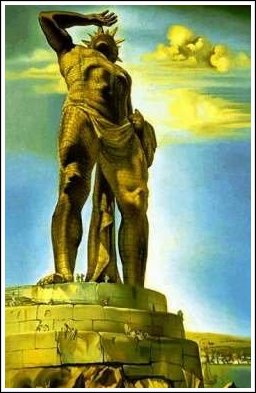
The Colossus at Rhodes was a bronze statue of the Greek god Helios (Apollo) erected on the Greek island of Rhodes around 290 BC. It was constructed to celebrate Rhodes' victory over the ruler of Cyprus, Antigonus 1 Monophthalmus, who unsuccessfully attacked Rhodes in 305 BC. Before it was destroyed, the Colossus of Rhodes stood over 107 feet high, making it one of the tallest statues of the ancient world. It took 12 years to complete. When Alexander died in 323 B.C. it was difficult to decide who would succeed him.
Fighting broke out among his generals, with four of them eventually dividing up the Mediterranean empire. During the fighting, Rhodes sided with Ptolemy and eventually took control of Egypt.
This angered Monophthalmus, so he had his son Demetrius, also a general, invade Rhodes with an army of 40,000. However, the city was well defended and the attack failed. Demetrious’ army abandoned the siege, leaving most of their equipment. To celebrate, the Rhodians’ sold the equipment and used the money to build a colossal statue of their patron god. Colossus stood proudly for 56 years before being destroyed by an earthquake.
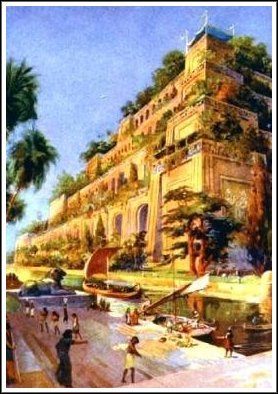
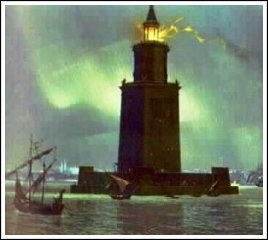
The Hanging Gardens of Babylon was supposedly built by King Nebuchadnezzar around 600 B.C. to please his queen, Amuhia. Some historians believe they were also associated with mythical Assyrian queen Semiramis or Sammuramat. She was also the legendary wife of Nimrod. Semiramis is almost forgotten in today’s history.
Archeologists conclude that the gardens were laid out atop a vaulted building, with provisions for raising water. The terraces reportedly rise from 75 to 300 ft.
The Pharos Lighthouse at the port of Alexandria was built by Sostratus of Cnidus during the 3rd century B.C. and located on the island of Pharos at Alexandria, Egypt. It was destroyed by an earthquake in the 14th century. Nothing of the structure remains today, but the city's Qaitbay fortress stands on what is thought to be its’ foundations. It was without a doubt the most powerful artificial light in the ancient world standing guard outside the port of Alexandria which had more than a million inhabitants. The lighthouse was constructed of white marble and towered 440 feet. The interior enclosed an impressive network of corridors, ramps, and stairways.
By day, mirrors reflected sunlight. By night, a flame was lit, producing a powerful beam of light, intensified by a mirror of polished bronze or brass. One ancient writer said it could be seen 30 miles out at sea. It stood nearly 1,700 years before being destroyed by a series of earthquakes during the 14th century.
Recent diving expeditions by archaeology teams have brought up pieces of statuary they believe to be remains of the lighthouse. Did divers actually find remains of the lighthouse? Some blocks of stone they discovered seem to have come from a large building. But, much of the material seems to be from an earlier period. Scientists believe they may have been recycled from even older buildings.
The story of the Pharos started with the city by Alexander the Great in 332 B.C. Alexander established at least 17 cities named Alexandria, but most of them disappeared. However, Alexandria in Egypt survives even today.
As stated earlier, this list is subject to change and may not include everything some might consider one of the seven ancient wonders.

